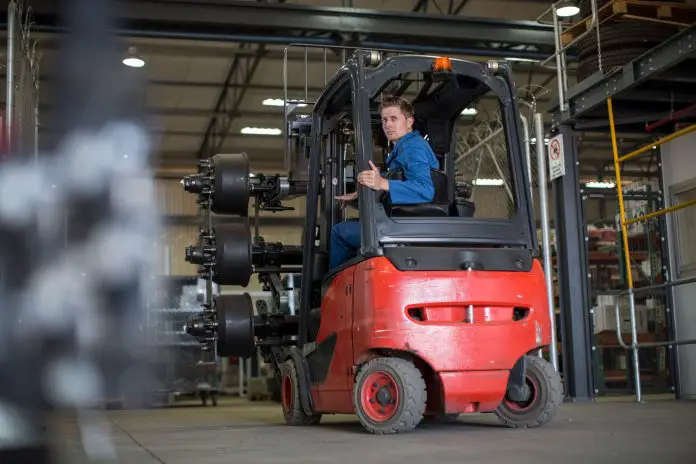Starting a career as a forklift driver is an exciting journey filled with opportunities. Are you prepared to jump in?
To begin, you need to be at least 18 years old and hold a high school diploma. The path to certification involves three key steps: formal instruction, hands-on training, and a performance evaluation.
With the right training, you’ll learn to operate forklifts safely and efficiently, transforming you into a skilled professional. This guide will lead you through the certification process, paving the way for your new career!
Key Takeaways
- You must be at least 18 years old and hold a high school diploma to operate a forklift.
- Enroll in a complete forklift certification course that blends classroom instruction with hands-on practice and a performance evaluation.
- Renew your certification every three years to remain compliant with OSHA regulations—it’s like testing your driver’s license up to date.
- Choose the appropriate forklift certification and excel in both the written exam and practical training to showcase your expertise.
Benefits of Forklift Certification
Obtaining forklift certification is like earning a badge of honor in the heavy machinery area. Why is this certification critical?
It goes beyond merely operating a powered industrial truck; it embodies safety, efficiency, and career advancement.
Initial, let’s talk about workplace safety. Did you know that OSHA (Occupational Safety and Health Administration) estimates around 70% of forklift accidents are preventable?
This is where your certification truly matters. Completing a forklift certification training program arms you with necessary safety protocols for operating different forklifts, from internal combustion engine trucks to electric motor hand trucks. The training covers everything from rough terrain forklift trucks to pallet jacks, ensuring you know how to safely operate each type.
Now, consider job opportunities. As a certified forklift operator, you open doors to diverse industries, including construction sites and warehouses. Your certification transforms you into a valuable asset, making you more appealing to employers. After all, who wouldn’t want a worker capable of preventing accidents and enhancing operational efficiency?
The certification process involves more than just passing a written test and a practical test. It includes hands-on training, much like learning to ride a bike—once you master it, it sticks with you. According to the OSHA Education Center, formal instruction is critical for understanding the intricacies of load handling and workplace hazards. Plus, you’ll need to complete a refresher course every three years to sharpen your skills and stay OSHA compliant.
Also, being forklift certified enhances your professional development. It’s not just about moving boxes; it’s about mastering a skill that can lift your career. Picture yourself operating different types of forklifts and even supervising a team. This certification is your launchpad to greater opportunities.
When contemplating how to become a forklift driver, weigh the benefits of certification: heightened safety, expanded job prospects, and refined skills. It’s an investment in your future, ensuring you’re not just another driver, but a properly trained professional ready to conquer any challenge.
Getting Started
Becoming a forklift driver is like Begining on an exhilarating adventure. Imagine steering a powerful machine, effortlessly lifting heavy loads. But how do you start this journey?
The path to becoming a certified forklift operator is straightforward, yet it requires dedication.
Initial, check if you meet the basic requirements. Are you at least 18 years old and do you have a high school diploma? If so, you’re laying a solid foundation—like the base of a skyscraper, it supports everything that follows.
Next, enroll in a forklift certification training program. These courses equip you with necessary skills, from operating a forklift safely to understanding OSHA regulations. Training usually consists of two main components:
- Classroom Instruction: Look at theory, covering topics like load handling and safety procedures.
- Hands-On Training: This is where the real action happens! You’ll operate different forklifts, gaining practical experience to prepare for your practical test.
After training, you’ll take a written test and a practical test to demonstrate your skills. Passing these exams is like earning your driver’s license—it’s your ticket to safely operating forklifts.
Remember, certification isn’t forever. It expires after three years, so you’ll need to complete refresher training to keep your credentials current. Think of it as routine maintenance for your skills—critical for peak performance.
Why is this training necessary?
Forklifts can be dangerous if mishandled. Statistics reveal that many workplace accidents can be prevented with proper training. Being a well-trained driver not only protects you but also your coworkers and the equipment around you.
The journey to becoming a forklift driver includes:
- Enroll in a certification course
- Complete classroom and hands-on training
- Pass the written and practical exams
- Stay updated with refresher courses
With determination and the right training, you can open up a wealth of job opportunities across different industries, from warehouses to construction sites. Are you ready to take the plunge?
Forklift Certification Training
Becoming a certified forklift operator opens doors to numerous job opportunities. But how do you earn this certification?
The journey starts with forklift certification training. Just like learning to ride a bike, mastering forklift operation requires both theory and hands-on practice.
Initial, let’s establish the basics. To drive a forklift, you must be at least 18 years old and hold a high school diploma. Think of this as the sturdy foundation of a skyscraper; without it, everything else is at risk. Next, enroll in a reputable certification course that covers necessary topics like OSHA regulations and safety procedures for forklift operation.
What does this training involve?
It usually includes:
- Formal instruction: This classroom segment covers forklift types, load handling, and workplace hazards.
- Hands-on training: Here, you operate the forklift under supervision, similar to a driving lesson.
- Practical test: After training, you’ll complete a skills assessment to demonstrate your ability to safely operate the equipment.
Once you finish the training, you’ll take a written test and a final exam. Passing these assessments means you’re on your way to becoming a certified forklift operator! Remember, your certification isn’t forever; it must be renewed every three years, much like a routine skills check-up.
Why is this certification critical?
Operating a forklift without proper training can be dangerous. According to OSHA, many forklift accidents are preventable. By getting certified, you’re not only following the law but also protecting yourself and those around you.
Ready to increase your career?
You can find OSHA-approved training programs online or in-person. Some employers even offer in-house training. If you opt for an online course or classroom training, it’s critical to meet the OSHA forklift training requirements to stay compliant.
Becoming a certified forklift operator unlocks diverse job opportunities in fields like warehousing and construction. With the right training, you’ll be equipped to steer the challenges of operating a forklift safely and efficiently.
Forklift Operator Training Course Outline
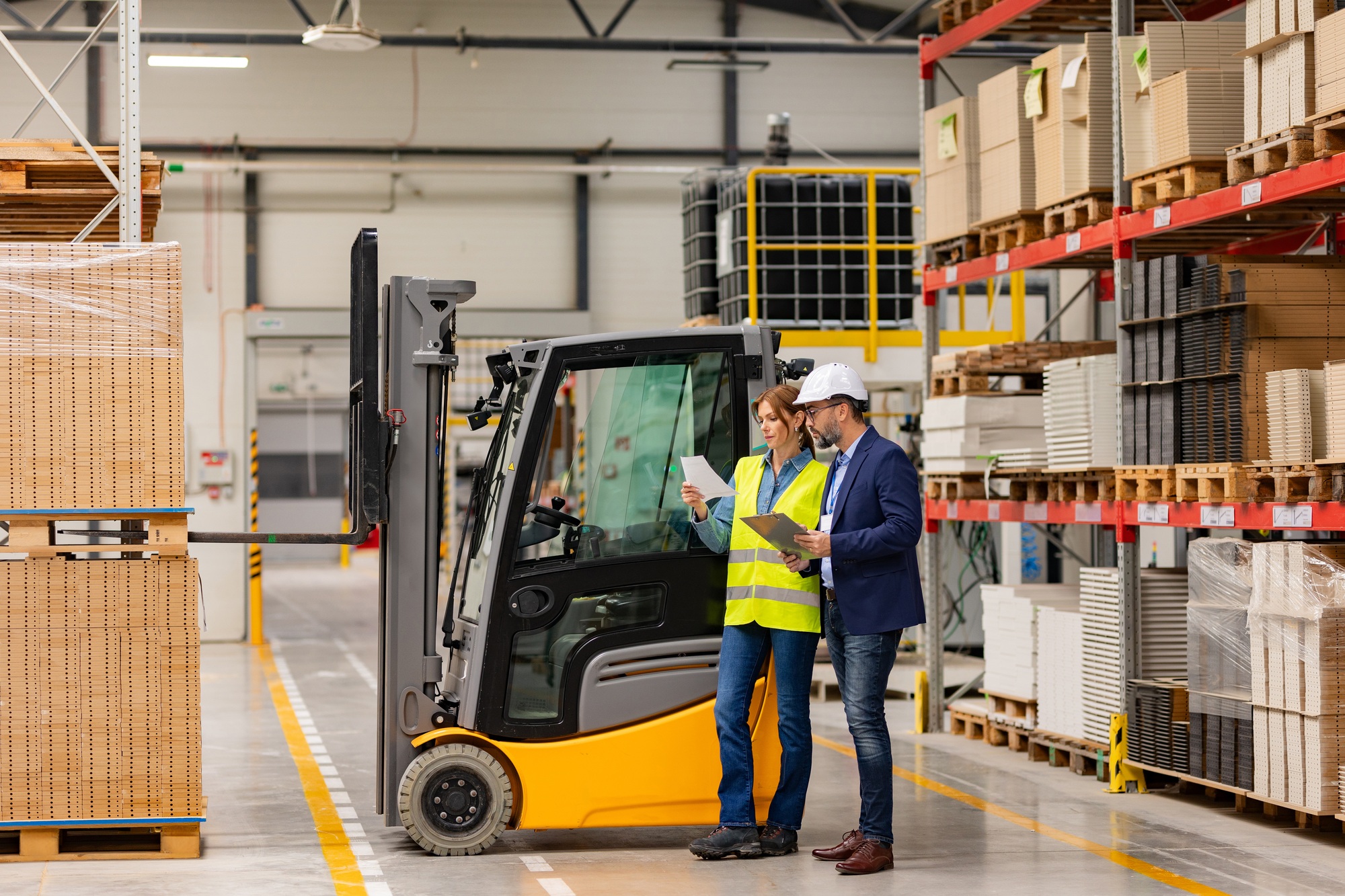
Begining on a career as a forklift operator is like stepping into a world of powerful machinery and endless possibilities. A forklift operator training course is your necessary guide, leading you through the critical lessons needed for certification.
Your journey kicks off in the classroom, where you’ll look at OSHA regulations, safety protocols, and the different types of forklifts, such as rough terrain forklifts and electric motor hand trucks. This foundational knowledge is akin to learning the rules of a game before you play; it sets the stage for your success.
Then, it’s time for hands-on training. Here, you’ll take the wheel, practicing forklift operation under the watchful eye of your instructor. This is your chance to sharpen critical driving skills and master load handling and maneuvering. Think of it as learning to ride a bike—true expertise comes from practice!
As you progress, you’ll gear up for the written test and practical assessment. These evaluations make sure you can safely operate a forklift and understand workplace safety. Just like every superhero must train rigorously, so must you!
Once you pass, you’ll earn your forklift certification. Remember, this certification isn’t permanent! Every three years, you’ll need to complete a refresher course to stay OSHA compliant. Think of it as a musician honing their skills to stay at the top of their game.
Here’s a streamlined outline of your training journey:
- Understand the requirements: Be at least 18 and possess a high school diploma.
- Enroll in a training course: Choose a program that meets OSHA standards.
- Complete formal instruction: Learn safety procedures and equipment operation.
- Hands-on training: Practice driving and load handling.
- Pass the written and practical exams: Showcase your knowledge and skills.
- Receive your certification: Celebrate your achievement!
- Complete refresher training: Update your skills every three years.
Operating a forklift unlocks exciting job opportunities across different industries, from warehouses to construction sites. By becoming a certified forklift operator, you not only improve your skills but also play a critical role in promoting occupational safety in your workplace.
Safety and Hazards
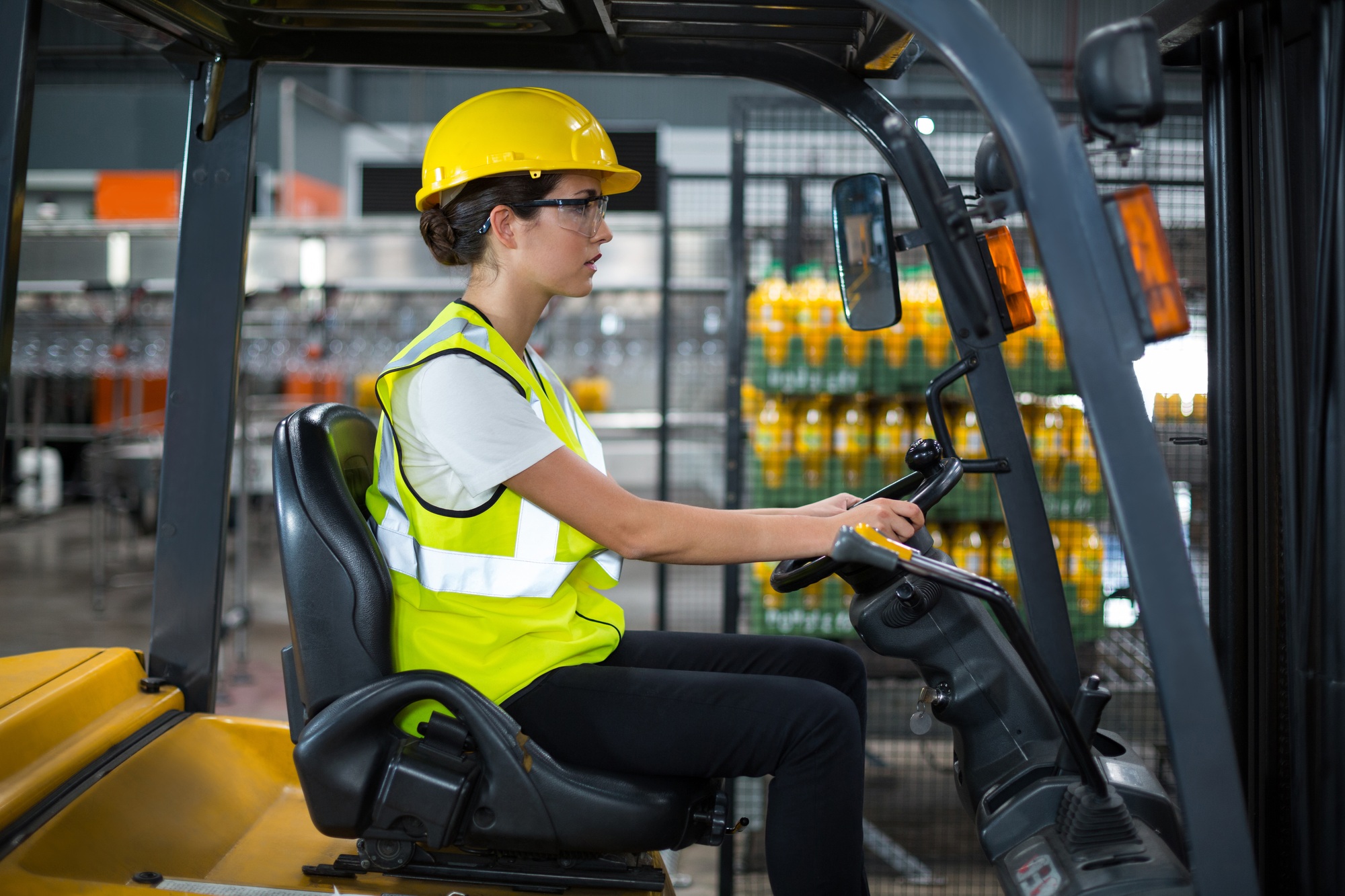
Thinking about a career as a forklift driver? Mastering safety and hazards is non-negotiable. Operating a forklift is akin to taming a powerful beast; it requires skill, vigilance, and respect. What if someone attempts to drive a forklift without training?
It’s like trying to steer a car with faulty brakes—dangerous and potentially disastrous.
To become a certified forklift operator, you must complete forklift certification training, which includes both a classroom component and hands-on instruction. In the classroom, you’ll explore OSHA regulations, hazard recognition, and operating procedures. The practical segment allows you to practice load handling and safety procedures under the watchful eye of a qualified instructor.
Why is this training necessary?
According to OSHA, about 70% of forklift accidents are preventable. Imagine dodging a car crash simply by taking a driving course! Similarly, forklift certification equips you with the knowledge to safely operate different forklifts, from internal combustion engine trucks to electric motor hand trucks.
Key elements of forklift safety training include:
- Personal Protective Equipment (PPE): Always wear safety gear like helmets and gloves.
- Equipment Maintenance: Regularly inspect forklifts for mechanical issues before use.
- Emergency Procedures: Be prepared to respond effectively in case of an accident or equipment failure.
After training, you must pass a written test and a practical test to demonstrate your skills. Keep in mind, your certification expires every three years, making refresher training critical to stay compliant with OSHA standards.
In-house training is another possible option for employers looking to maintain OSHA compliance. It’s often more convenient and cost-effective than external programs. Investing in proper training not only protects your workers but also enhances in general workplace safety.
Becoming a forklift driver is a rewarding journey, but it comes with significant responsibilities. By prioritizing safety and identifying potential hazards, you can help prevent accidents and cultivate a safer work environment.
Forklift Certification Testing and Evaluation

Becoming a forklift driver is like earning a pilot’s license; instead of finding your way the skies, you’ll be steering through busy warehouses and construction sites. Understanding the forklift certification process is critical for ensuring safety and compliance.
What does it take to become a certified forklift operator? Your journey starts with forklift certification training. This training is more than a checkbox; it equips you with the skills to safely operate different forklifts, from internal combustion engine trucks to electric motor hand trucks. Imagine a pilot honing their skills in a simulator—your hands-on training will help you master load handling and precise maneuvering.
To meet OSHA forklift training requirements, you must complete a training course that includes a written test and a practical assessment. This ensures you understand safety procedures and can demonstrate your forklift operation skills. Just like preparing for a major exam, thorough preparation is necessary. Familiarize yourself with OSHA standards and learn to identify workplace hazards.
After training, you’ll take a final exam to earn your certification. But remember, this certification isn’t forever! Like a driver’s license, it must be renewed every three years, requiring refresher training. This is your chance to sharpen your skills and stay updated on new regulations and safety standards.
Employers seek candidates who are OSHA compliant. They value workers who have undergone proper training and can showcase safe forklift operation. Think of your certification as a badge of honor, signaling your readiness for the job. If you’re pursuing a career in this field, being a certified forklift operator opens doors to diverse job opportunities across different industries.
The path to becoming a forklift driver involves:
- Training: Complete both classroom and hands-on training.
- Testing: Pass a written test and practical assessment.
- Certification: Obtain and maintain your forklift certification.
- Renewal: Engage in refresher training every three years.
By following these steps, you’ll not only become a forklift driver but also play a critical role in creating a safer workplace for everyone.
Becoming a Forklift Certified Operator
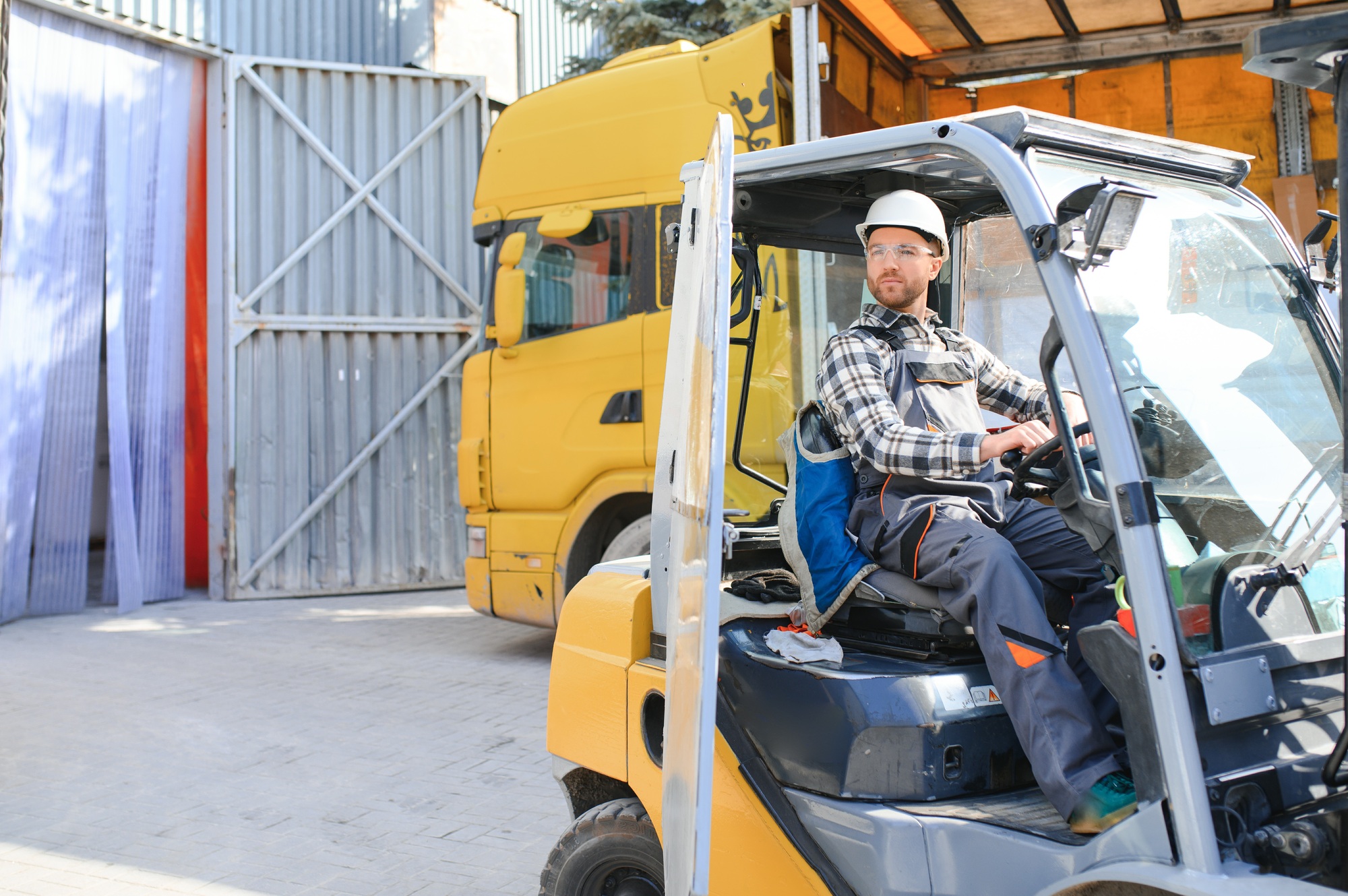
Becoming a forklift certified operator unlocks a world of job opportunities across diverse industries. But how do you get that critical certification?
Understanding the forklift certification process is your initial step toward safely mastering these powerful machines.
Initial, check if you meet the basic requirements. Are you at least 18 years old?
Do you have a high school diploma or equivalent?
If yes, you’re on the right track! Next, enroll in a forklift certification training course. This course blends classroom instruction with hands-on training. Think of it like learning to ride a bike: you need to understand the theory before you can balance on two wheels.
The OSHA forklift training requirements are straightforward. You’ll explore occupational safety, load handling, and different forklift types, including rough terrain forklift trucks and electric motor hand trucks. After completing the training, you’ll take a written test and a practical test to demonstrate your skills. Passing these tests is like earning your driver’s license; it certifies your ability to operate a forklift safely and effectively.
Remember, certification isn’t forever. It usually expires every three years, requiring a refresher course to keep you updated on safety regulations and best practices. Just like any skill, operating a forklift requires ongoing education to adapt to changing safety standards and equipment.
Many employers prefer in-house training, where experienced operators mentor new hires. This method saves time and tailors training to the specific work environment. Imagine learning to cook in a restaurant kitchen; you’d want to master the exact tools and ingredients used there!
To become a certified forklift operator, follow these steps:
- Enroll in a certification course: Choose a training provider that meets OSHA standards.
- Complete the training: Engage in both classroom and hands-on instruction.
- Pass the exams: Successfully complete the written and practical tests.
- Stay certified: Take refresher training every three years.
By following these steps, you can operate forklifts safely and improve workplace safety. Remember, proper training is not just about landing a job; it’s about ensuring everyone returns home safely at the end of the day.
Career Opportunities and Advancement

Becoming a forklift driver opens doors to a many of career opportunities in industries like warehousing, construction, and logistics. Are you ready to begin on this journey?
Picture it as climbing a ladder—each rung brings you closer to greater job advancement and professional growth.
Initial, let’s cover the essentials. Are you at least 18 years old and possess a high school diploma? If so, you’re ready to start. Your next step is to obtain forklift certification, which is critical for safely operating powered industrial trucks.
Forklift certification blends formal instruction with hands-on training. You’ll participate in a course that meets OSHA forklift training requirements, emphasizing safety protocols, load handling, and the operation of different forklifts, including electric motor hand trucks and internal combustion engine trucks. Why is this training necessary?
Operating a forklift without proper training is like driving a car without a license—both are perilous and illegal!
After completing the classroom training, you’ll take a written test and a practical test. This hands-on assessment ensures you can operate a forklift safely in real-world situations—think of it as a driving test for heavy machinery. Once certified, don’t forget your skills need new. OSHA requires refresher training every three years to keep you updated on safety regulations and procedures.
With your forklift operator certification in hand, job opportunities abound. You can apply for positions in different fields, from warehouse operations to construction sites. The demand for skilled forklift drivers is increasing, meaning you can not only secure a job but also advance your career by gaining experience with different forklift types and operating conditions, such as rough terrain forklift trucks.
Becoming a forklift driver is an excellent entry point into the workforce. With the right training and certification, you can operate forklifts safely, prevent accidents, and enjoy a fulfilling career with numerous paths for advancement. Are you ready to take the initial step?
Maintaining Certification
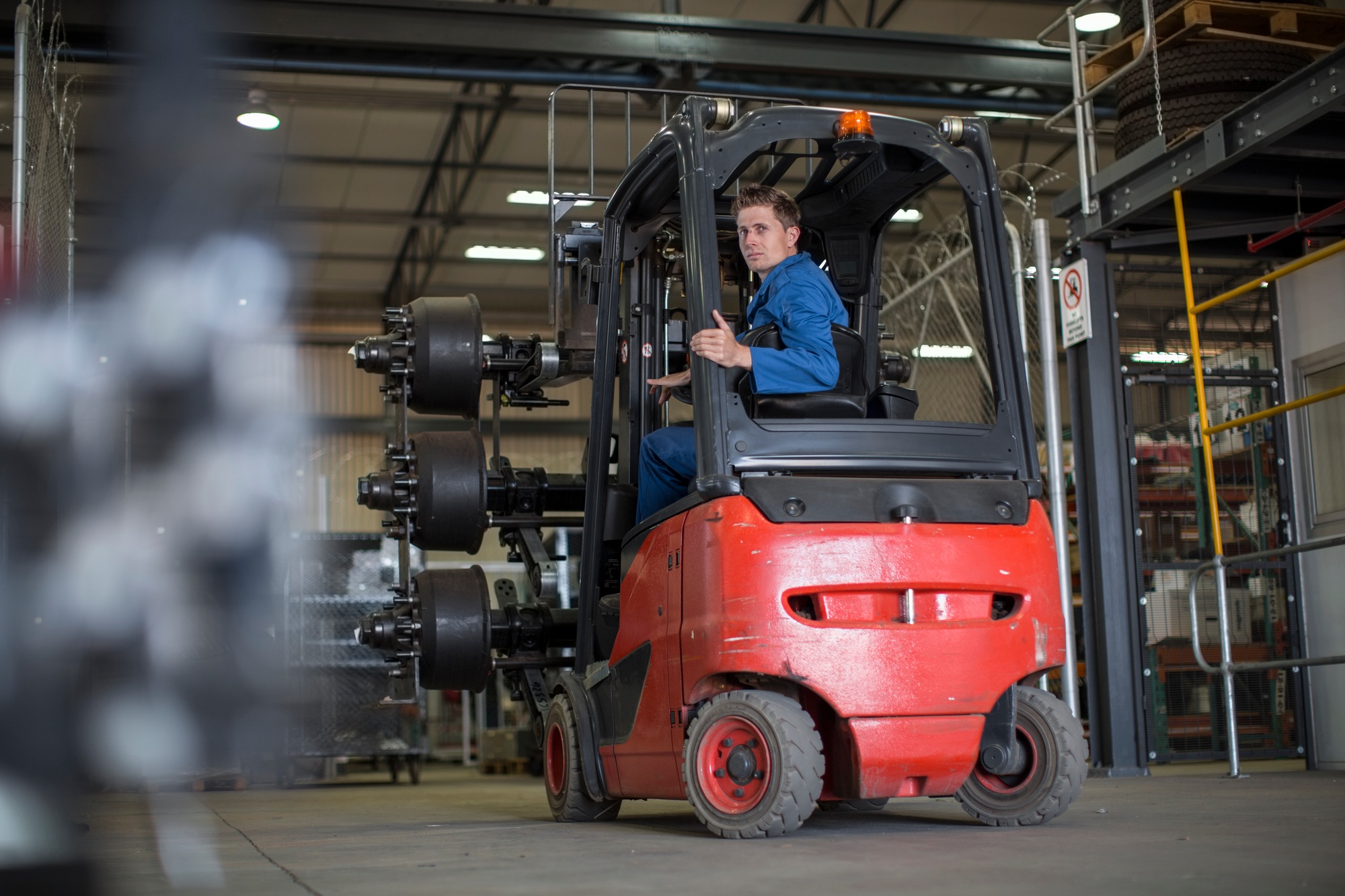
Becoming a certified forklift operator is just the start; maintaining your certification is necessary. Think of it like a driver’s license that requires renewal and ongoing education to stay current with safety practices. Why is this significant?
Operating a forklift is like being the captain of a ship, finding your way through a busy work environment where safety is paramount.
The Occupational Safety and Health Administration (OSHA) sets clear training requirements for forklift operators, including a certification course that combines theory with hands-on training. Did you know your certification expires every three years?
This is where refresher training comes in. Just as athletes train to stay in peak form, forklift operators must regularly update their skills to make sure safety.
Here’s how to maintain your certification:
- Complete Refresher Training: Every three years, participate in refresher training to keep your skills sharp.
- Stay Informed: Keep abreast of changes in OSHA regulations and safety procedures.
- Hands-On Training: Engage in practical assessments to demonstrate your ability to operate different forklifts safely.
Employers must provide this training to make sure all operators remain OSHA compliant. If you work in a warehouse or construction site, in-house training may be available, tailored to the specific equipment you’ll use, whether it’s electric motor hand trucks or internal combustion engine trucks.
Maintaining your certification is not just about avoiding penalties; it’s about fostering workplace safety. Many forklift accidents are preventable. By staying certified, you protect not only yourself but also your coworkers and the entire work environment.
Consider your forklift certification a living document, much like a garden that needs regular care. With consistent maintenance and education, you’ll be prepared to operate a forklift safely and effectively.
Choosing the Right Forklift Certification Training Provider

Choosing the right forklift certification training provider is like picking the perfect coach for your sports team. You want someone who knows the game, understands the rules, and can lift your skills. So, how do you find that ideal match?
Begin by reviewing the OSHA forklift training requirements. These standards make sure your provider teaches safe forklift operation. Look for an OSHA compliant provider offering a curriculum that combines classroom instruction with hands-on training. This blend is critical, equipping you with both theoretical knowledge and practical skills to steer different workplace hazards.
Next, ask about the types of forklift operations covered in the training. Different jobs may require expertise in rough terrain forklift trucks, electric motor hand trucks, or internal combustion engine trucks. A quality program tailors courses to the specific equipment you’ll be using.
Check if the provider offers recertification training. Just as athletes need regular practice, forklift operators must refresh their skills every few years to stay safe and compliant. Refresher courses are necessary for testing up with the latest safety procedures and industry standards.
Consider the training format. Will you learn in a traditional classroom, or is there an option for online courses? While online training offers convenience, make sure it includes necessary practical tests to assess your skills. A complete program will increase your confidence as you pursue forklift operator jobs.
At last, seek out reviews or testimonials from past students. Their experiences can illuminate the training quality and instructor effectiveness. A great training program, much like an engaging book, should engage and inform.
When choosing a forklift certification training provider, ask yourself:
- Are they OSHA compliant? Verify their credentials.
- Do they offer hands-on training? Practical skills are necessary.
- What types of forklifts do they cover? Make sure it aligns with your job needs.
- Is recertification available? Testing skills new is critical.
- What do past students say? Reviews can guide your decision.
By selecting the right program, you open up the door to a successful career as a certified forklift operator. It’s not just about operating a forklift; it’s about doing so safely and efficiently.
Summing up
Getting your forklift certification is an exciting step toward a rewarding career. Choose a training provider that prioritizes hands-on experience and complies with OSHA standards. Why is safety critical when operating heavy machinery?
It’s the bedrock of effective operation. With thorough training, you’ll not only learn to drive a forklift but also gain access to a wealth of job opportunities. Imagine it as receiving a key that unlocks numerous doors in the job market.
Frequently Asked Questions
What makes you forklift certified?
Completing an OSHA-compliant training course, passing an exam, and demonstrating hands-on skills make you forklift certified.
What qualifications do you need to become a forklift driver?
To become a forklift driver, you need to be at least 18, have a high school diploma, complete OSHA training, and pass a certification exam.
How long does it take to get certified as a forklift driver?
It usually takes a few days to complete the classroom and hands-on training, plus passing the exam for forklift certification.
What are the main requirements for a forklift driver?
To become a forklift driver, you need to be at least 18, have a high school diploma, complete safety training, and pass a certification exam.


